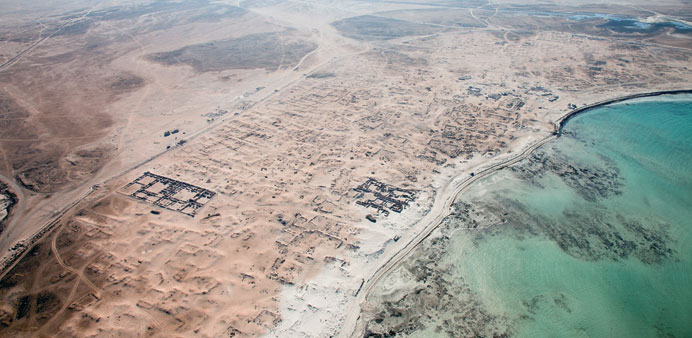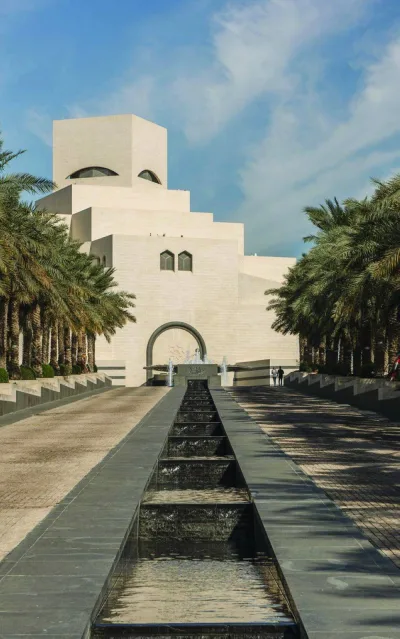By Bonnie James/Deputy News Editor
A temporary museum is to be opened near Al Zubarah Fort in December this year, featuring finds from the excavations of Qatar’s largest and most impressive archaeological site.
“Parts of Al Zubarah Fort will also be accessible in time for Qatar National Day on December 18,” Qatar Museums Authority (QMA)’s chief archaeology officer Prof Thomas Leisten said yesterday.
The fort, built in 1938 by Sheikh Abdullah bin Jasim al-Thani as part of a complex defence system to protect Qatar’s northern coastline, is currently under restoration.
The temporary museum is to be housed in portacabins located about 50m away from the fort.
The exhibits, which will illustrate Al Zubarah’s connections to global trade and seafaring, include porcelain and celadon from China and Japan, pottery from India, wood from eastern Africa, various pearling-related implements and even the images of dhows incised into plaster walls of several houses in the historic settlement.
“The exhibits are to be shifted later to the Qatar National Museum, which is under construction now,” Leisten explained.
Photographs and documentation of the archaeological excavations will be on show inside the fort, which will serve as a temporary visitor centre until a permanent facility is established as part of a partnership between QMA and Maersk Oil Qatar.
Gulf Times had reported the other day that Al Zubarah Archaeological Site, which has outstanding universal value as the Gulf’s most complete and well-preserved pearl trading and diving town of the 18th-19th centuries, is likely to be included in the Unesco World Heritage List.
“The nomination process will be completed this month,” Leisten had said on Sunday at an agreement signing ceremony with Maersk Oil Qatar.
Qatar’s largest and most impressive archaeological site, the abandoned coastal town of Al Zubarah, with 60 hectares of ruins within its former walls, is situated about 100km to the northwest of Doha in the district of Al Shamal.
The settlement was founded around 1760 by the Banu Utba tribe from Kuwait, seeking to create a safe trading haven in the Gulf, as other long-established ports were destroyed, occupied, or ridden with plague.
Over a short period of time, Al Zubarah quickly rose to become the foremost centre for pearl-based trade and commerce in the region, and Qatar’s largest and most important town.
Its location in central Gulf was instrumental in making Al Zubarah the premier pearling and trading town in the region after the decline of Basra in Iraq.
Al Zubarah Archaeological Site represents the only complete urban plan of an Arabian pearl-merchant town, with its unique combination of neighbourhoods, mosques, palaces, markets, defensive systems and a canal.
In 1811, Al Zubarah was destroyed by Omani forces. The town survived until the end of the 19th century as a small pearl fishing community only to be gradually abandoned during the first half of the 20th century.

An aerial view of the remnants of the town of Al Zubarah.


